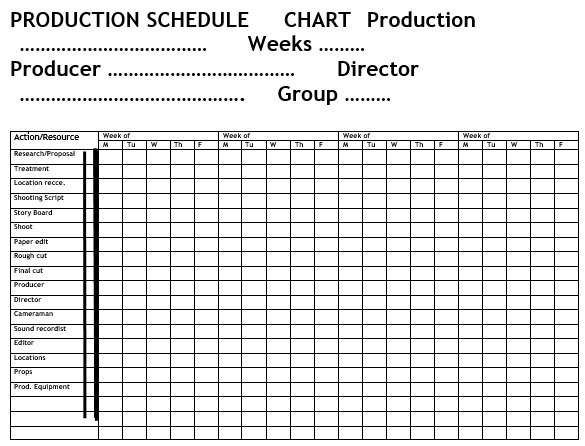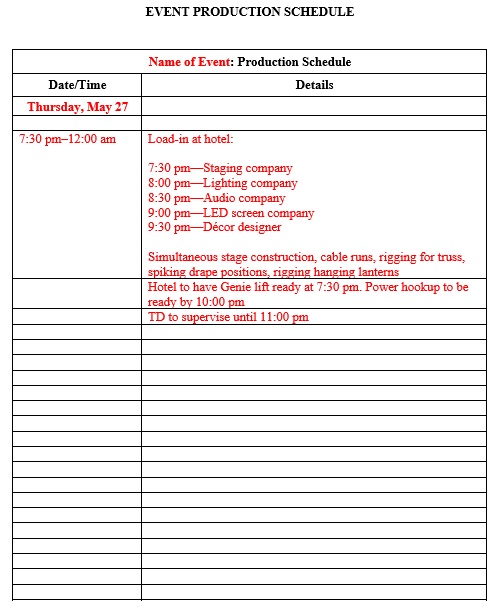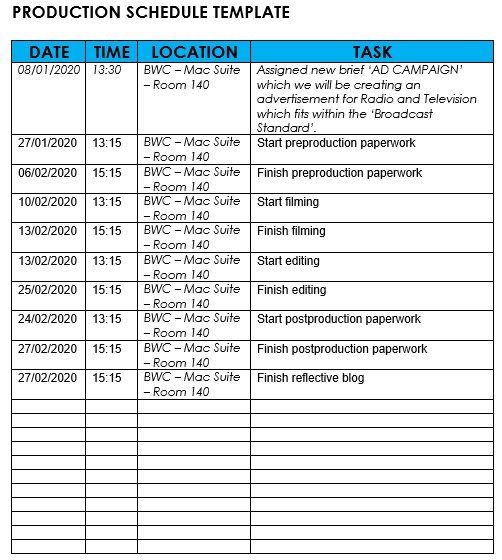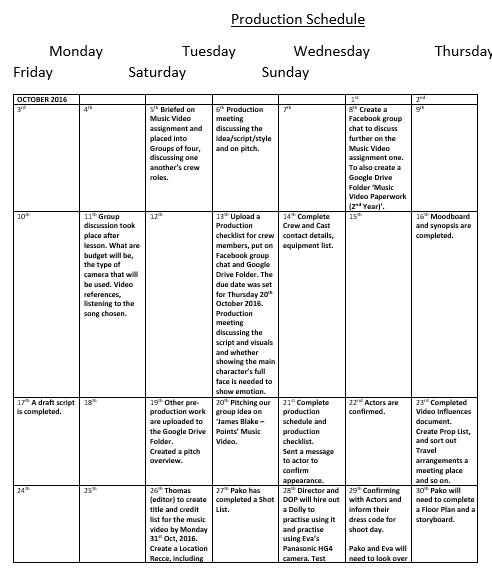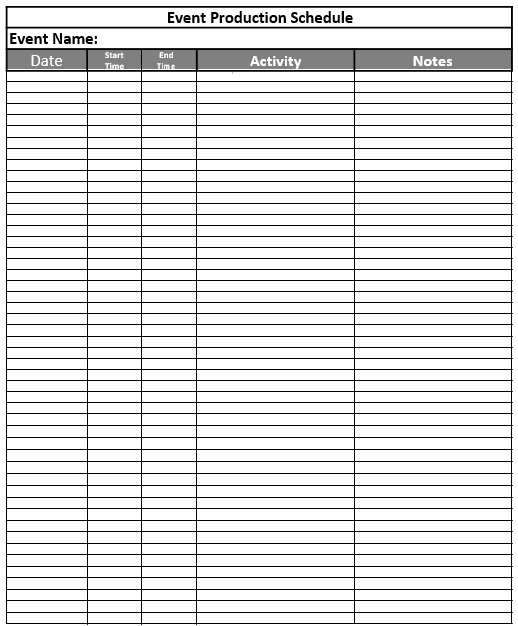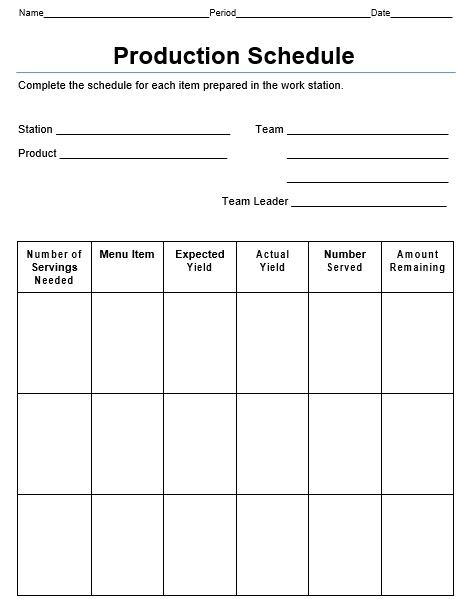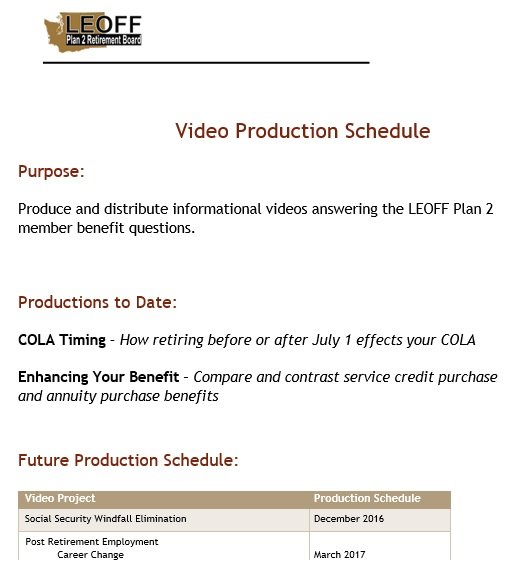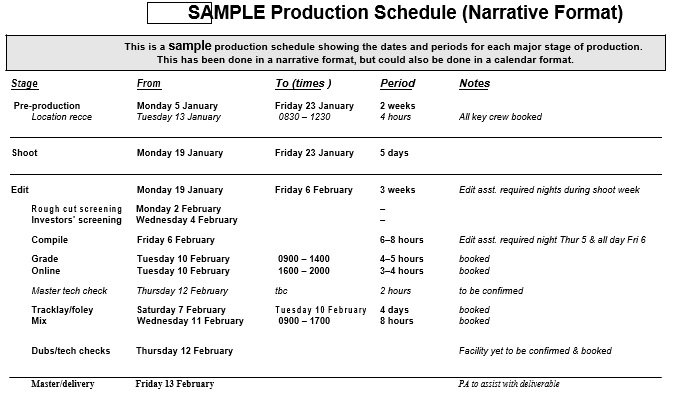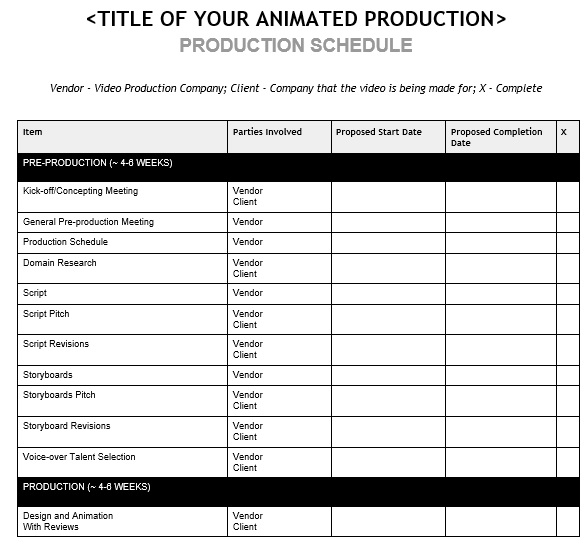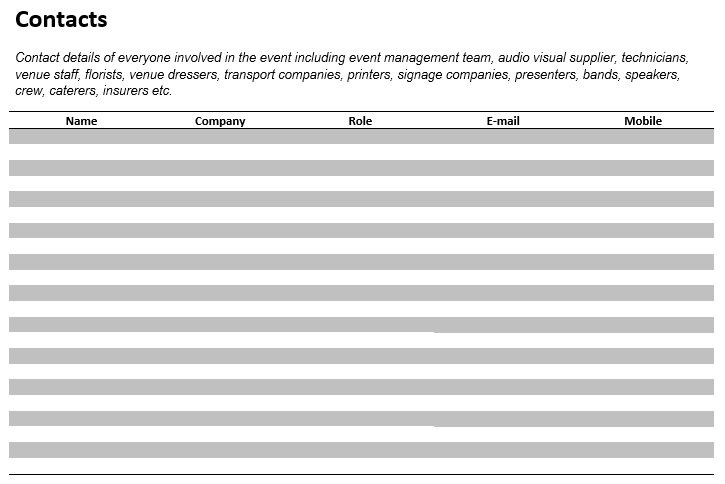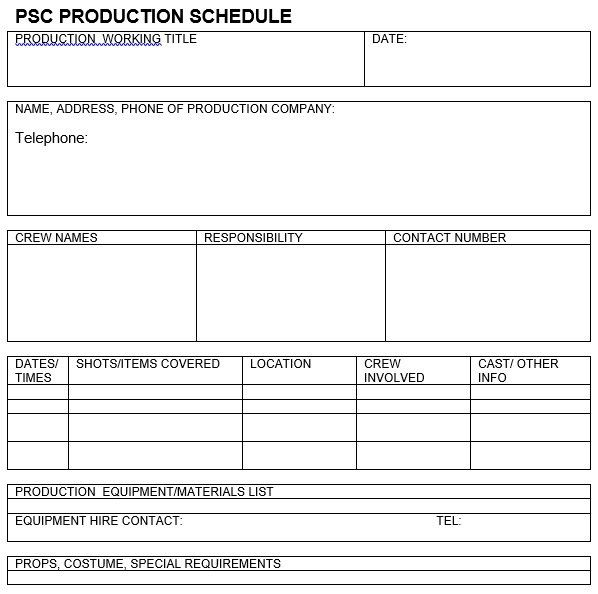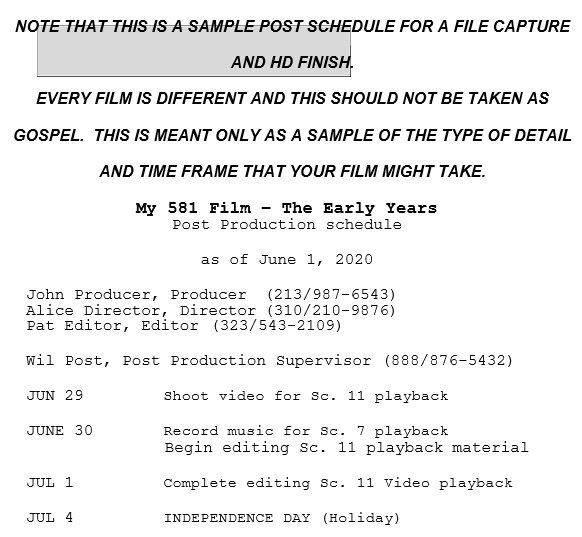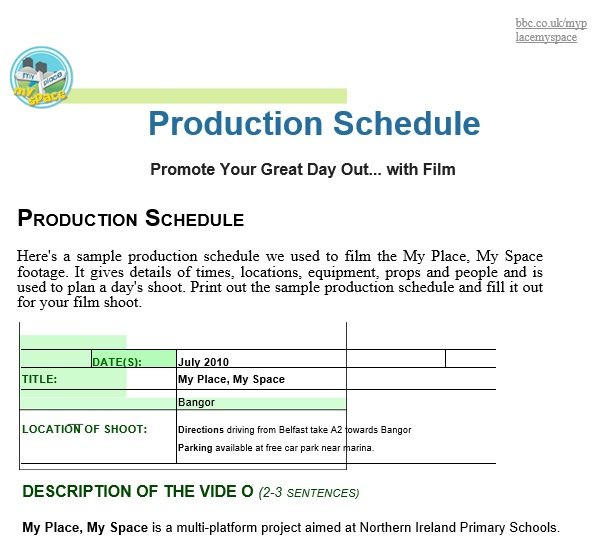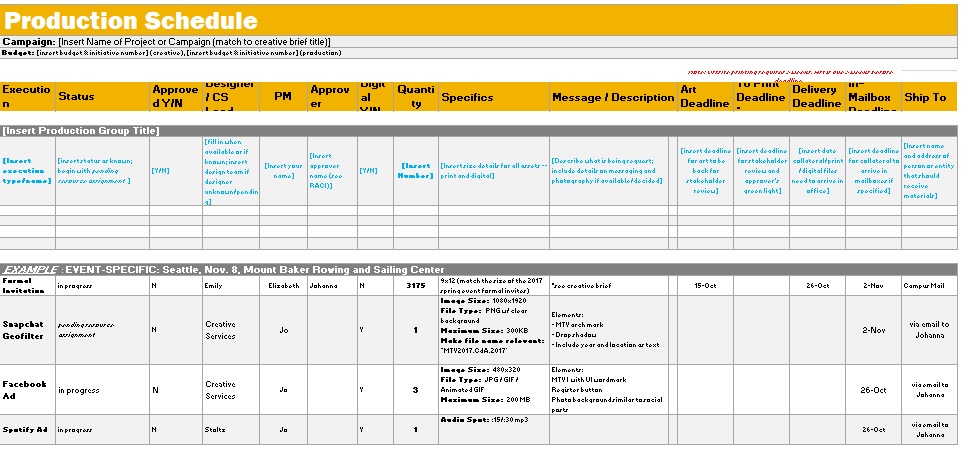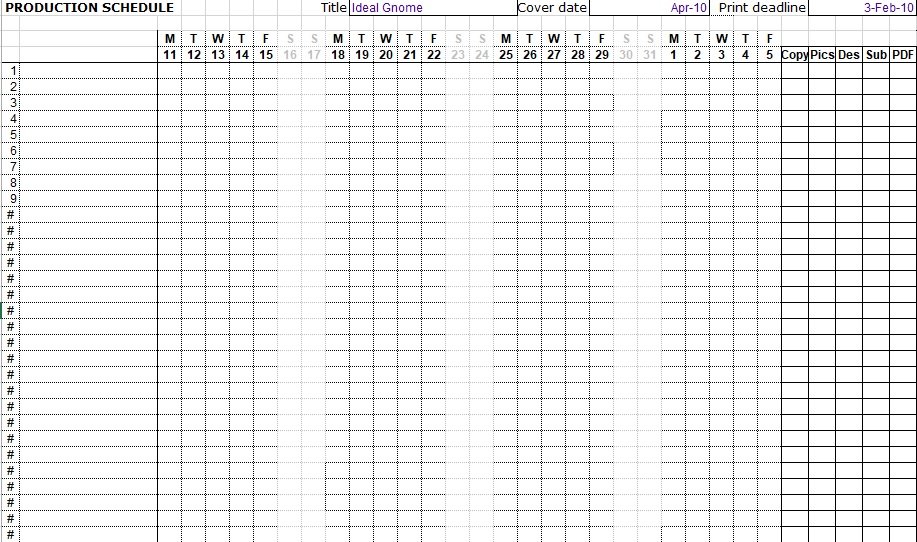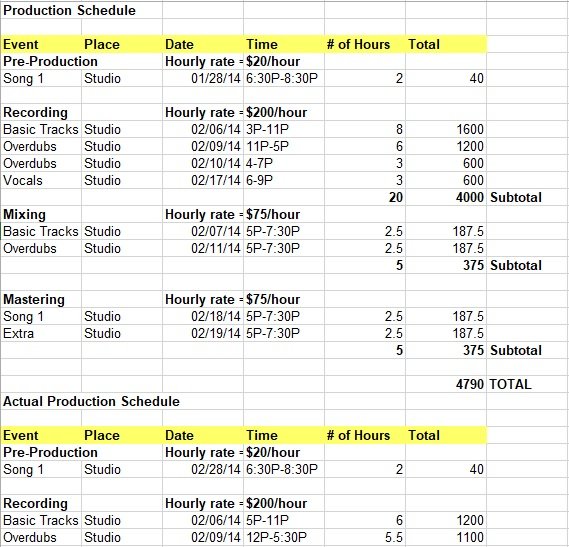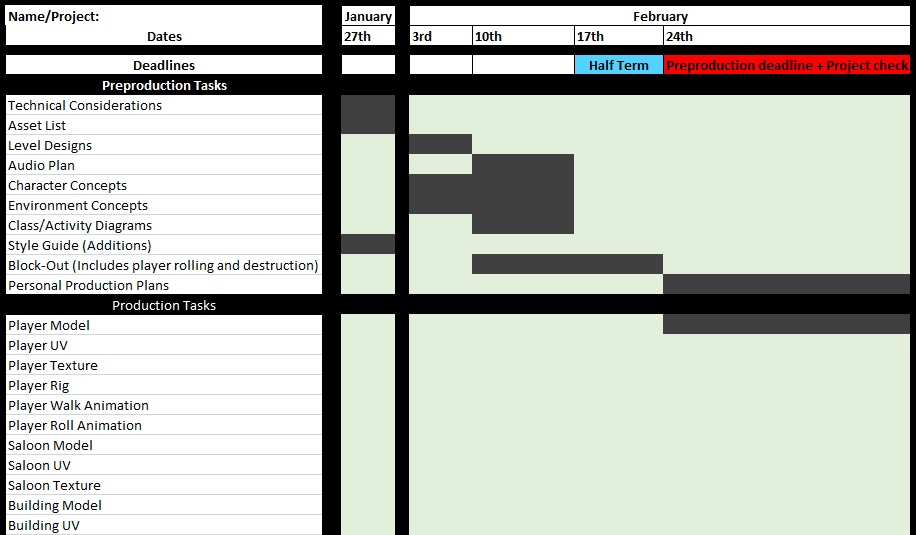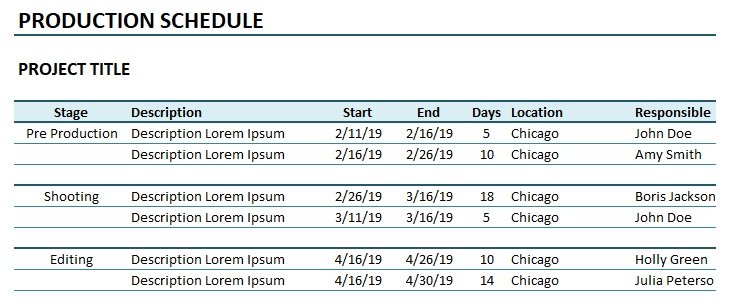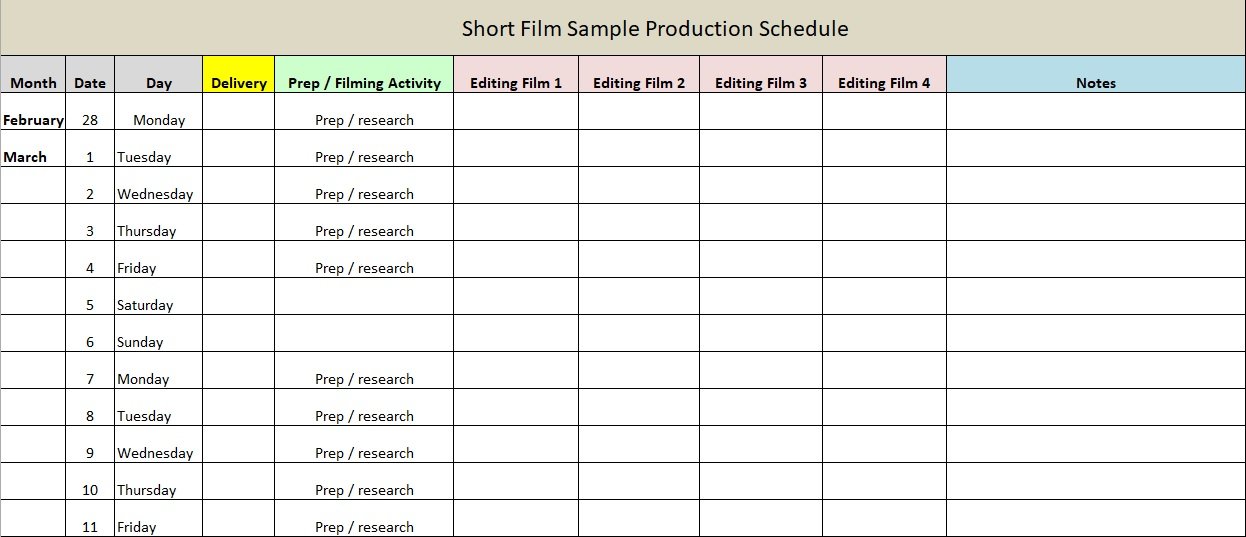A well-designed production schedule template helps you in managing tasks while producing films. With the help of this document, you can maintain a balance among all of the tasks that pertain to your production.
Table of Contents
A production schedule for film:
Producing a film includes a variety of factors that have to go into a specific order. Without the semblance of a guide such as a production schedule template, it is very difficult to monitor all of the things that must get completed. You can make the task of creating your schedule a lot less difficult by having a production schedule.
Importance of a production schedule:
In most film productions, creating schedules is a lot like assembling a puzzle together. This is because it includes several different factors. Each factor has varying priorities that you all have to consider when planning your production. For this, you require a production plan template.
Moreover, a film production is not a case of selecting a script and then simply conducting the filming from start to end. The film production is scheduled chronologically. When creating your production schedule template, you need plenty of coordination to make sure that you grab all of the footage required in the amount of time available. You should also check Shot List Templates for Film & Photography.
What to include in a production schedule?
You should include the following essential information in a production schedule;
- The lining of the script
- Into breakdown sheets, break down the script
- Scouting for a location and securing it
- Collecting the crew you need
- Casting presenters or actors
- Organizing the equipment you need
- Acquiring all of the necessary permissions and licenses
- Creating the call sheet
- Creating the prop list
- Scheduling the special effects
How to create a production schedule?
There are various instances where you use the production schedule template. Here, you will pay attention on creating this document for filming. Follow the blow steps to create an effective production schedule;
Break down the script:
By breaking down the script, you can serve both your organizational and creative purposes. By doing this, you are “tagging” the items in the script. This way, you can come up with a catalog of what you require. When you are looking for locations and calculating your budget, this provides you context for them.
Make the budget:
If you don’t have an idea of how much you are going to spend then plan a production budget would be very difficult for you. When you have done with script breakdown, you can use the broken-down script to identify the following;
- what crew case
- equipment you need
- the cost of each piece of equipment
After ending up, you have to review your budget to find out where you can cut costs.
Decide the equipment to use:
After creating your budget, you have to identify what type of equipment you can afford. When you have identified what type of equipment you have to buy or rent along with the dates you will need them, by using an equipment management and tracking sheet, you can monitor everything.
Make a schedule on the basis of the availability of your crew:
Nowadays, outfits make their jobs easier by availing of software. For media management, all-in-one software makes you able to define your project’s milestones, checkpoints, and stages. While using this software, you will obtain a better understanding of how to make an outline of your schedule after having all the information you require.
Go through your schedule:
After completing the aforementioned steps, it’s time to go over your production schedule outline again to make sure you haven’t bypassed anything. This states that you have to keep reviewing. In this way, since you won’t have to second-guess anything, you can save a lot of valuable time when you start creating your shooting schedule.
Make your production schedule:
Finally, you are now prepared to start the process of writing your production schedule. Determining the number of pages is the best way to start you wants to shoot each day. In the film industry, for a typical production, shooting up to 5 pages each day is the average. However, it depends on the intensity of each of the pages and the contents of each of the scenes. For example, if the scene needs large stunts or lighting setups then you have to make more time.
Make the call sheets and distribute them:
For each production day, there will also be the time to come up with the call sheets. Now, you have an outline of who and what you need and you know where everything needs to be. So, the drafting of a call sheet simply requires the transferring of information from your schedule to the call sheets.
After that, add other essential information such as hospital information or weather forecasts to ensure that everyone has all of the information they require.
Conclusion:
In conclusion, a production schedule template includes the outline and framework of film production. It is typically prepared by the first assistant director during the pre-production stage. For the whole filming process, to create a realistic schedule, you have to gather all of the pre-production data. This document ensures that everything in the shooting will run smoothly and you will meet all of the budgetary and time objectives.

